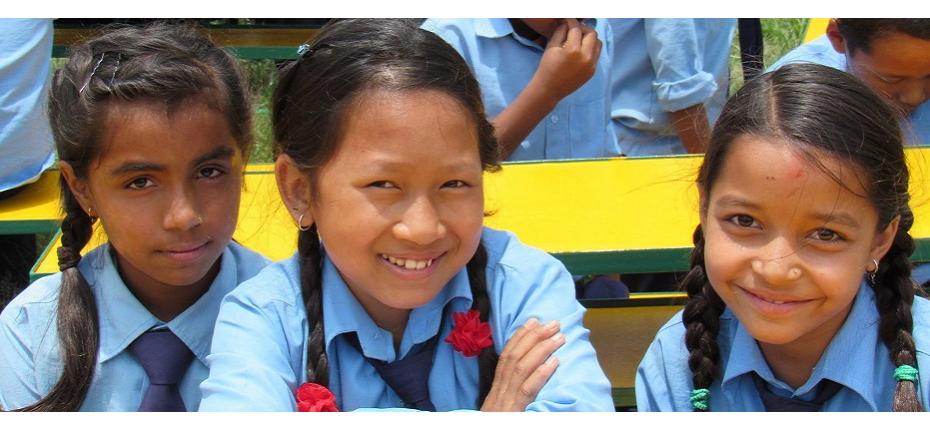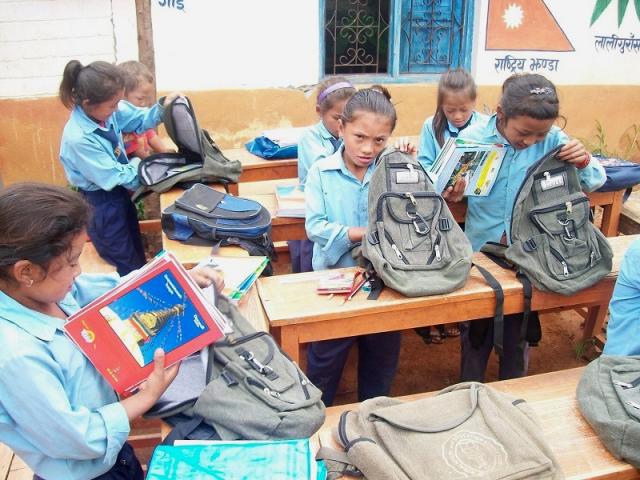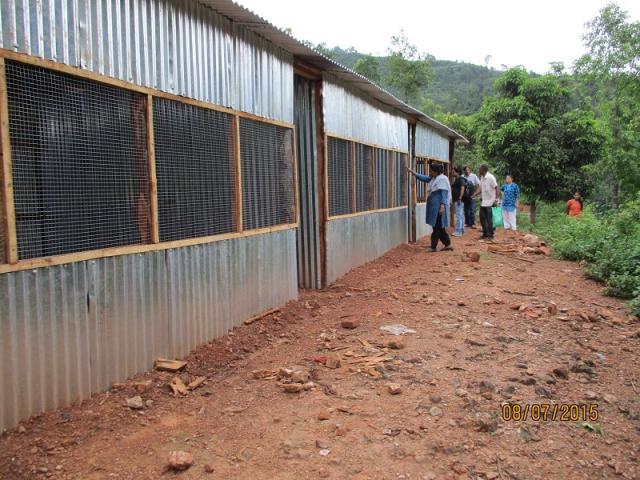 Relief work continues three months after a 7.8-magnitude earthquake hit Nepal on April 25. The disaster killed thousands and demolished more than half a million homes. A few weeks later, on May 12, a second major earthquake struck just as people were beginning to recover. The death toll from the two quakes stands at close to 9,000 people.
Relief work continues three months after a 7.8-magnitude earthquake hit Nepal on April 25. The disaster killed thousands and demolished more than half a million homes. A few weeks later, on May 12, a second major earthquake struck just as people were beginning to recover. The death toll from the two quakes stands at close to 9,000 people.
Most affected were the people in rural areas whose homes and livelihoods were destroyed. One such area is Tipling in Nepal’s Dhading District. Almost all 500 houses in the village were damaged or destroyed in the first earthquake; and according to Fr Samuel Simick SJ, who was in the area, the second earthquake “shook the confidence that was slowly building in the people to rebuild and resettle in the houses.”
“One thing I noticed was people had fear in their faces and nobody smiled or laughed,” says Sch Pascal Dhanwar SJ, an Indian Jesuit who assisted with relief efforts in Tipling. “It was very harsh and hard to digest.”
Though traumatised, people in Tipling and other villages are slowly recovering. Their concern now is building temporary shelters and securing food supplies amidst monsoon rains and roadblocks.
“Foreign funds and relief materials are [channelled] to the national basket, in the process hampering delivery of immediate relief to the far-flung villages,” says Fr Boniface Tigga SJ, Regional Superior of the Nepal Jesuits. “The aid and support efforts are challenged by lack of clear-cut policy guidelines to exempt customs duty on imported relief materials.”
Fr Tigga adds that many roads are still inaccessible due to landslides, making it harder for relief to reach remote villages. On foot, it would take five to 10 hours up steep hills before anyone can bring relief to these areas, and monsoon rains have made the task harder. Yet despite these challenges, Fr Tigga says “there is still a lot of hope”.
In May, dozens of organisations of various faiths and Christian churches responded to an appeal by the Apostolic Vicar of Nepal, Bishop Paul Simick, to work together in a joint operation to help the quake survivors. Caritas Nepal led the operation, supported by Caritas India and Australia.
The Jesuits are one of the religious communities working with Caritas. Together with many student volunteers from Jesuit-run schools, they have been visiting villages severely affected by the disaster to provide medical aid and distribute initial relief: tarpaulin sheets, blankets, mats, rice, cereals, pulse, oil, sugar, salt and gram.
Since May 19, they have also been coordinating work through the Nepal Jesuit Social Institute (NJSI). With the “Nepal Earthquake Relief and Rehabilitation Program”, NJSI is working with other organisations including Navjyoti Centre, the Catholic Health Association of India, and St Xavier’s College to increase its efficiency and to reach more survivors.
As of June 26, aid has reached 10 districts badly affected by the earthquake: Nuwakot, Kavrepalanchowk, Sindhupalchowk, Dhading, Gorkha, Lalitpur, Kathmandu, Okhaldhunga, Bhaktpur and Dolkha. NJSI has supported more than 7,000 households, or more than 40,000 people, in the process.
 The institute has also begun the second phase of its programme: resuming education. According to Fr Bill Robins SJ, Socius to the Regional Superior of Nepal, most schools have collapsed, and Jesuits are now working on building temporary classrooms and getting Nepalese students back to school.
The institute has also begun the second phase of its programme: resuming education. According to Fr Bill Robins SJ, Socius to the Regional Superior of Nepal, most schools have collapsed, and Jesuits are now working on building temporary classrooms and getting Nepalese students back to school.
“The challenge the Jesuits can best meet is in education, helping as we can to get schools running well,” says Fr Robins.
So far, NJSI has given school materials to about 3,800 students in 52 schools, as well as more than a hundred differently abled children. Meanwhile, some schools in Lalitpur, Kathmandu, Nuwakot, Gorkha, Sindhupalchowk, Kavrepalanchowk, Dolkha and Dhading received stationery, teaching materials, furniture, and corrugated galvanised irons sheets for their communities’ teaching-learning centres. There are also plans to reach another 30,000 students in the next few weeks.
Fr Robins says: “Hopefully, we can free a few Jesuits from other important ministry to stay several months in the villages we help, to especially provide moral support to the people there.”
Recently, 15 Jesuits from India had also been working in various districts for onsite assessment, supervision, reconstruction, and rehabilitation work. Maize seeds have also been distributed in Kavrepalanchowk to support farmers’ livelihoods. There are plans to do the same in other districts.
 After the monsoon season ends in October, rehabilitation is next on the agenda. NJSI is planning to accompany displaced and homeless survivors, while supporting schools in the worst hit districts. The institute also hopes to bring aid to remote areas in Nepal and continue helping survivors resume their livelihoods. Along with this are plans to provide psycho-social counselling to survivors to strengthen their hope and encourage a sense of social security.
After the monsoon season ends in October, rehabilitation is next on the agenda. NJSI is planning to accompany displaced and homeless survivors, while supporting schools in the worst hit districts. The institute also hopes to bring aid to remote areas in Nepal and continue helping survivors resume their livelihoods. Along with this are plans to provide psycho-social counselling to survivors to strengthen their hope and encourage a sense of social security.
The Nepalese have shown “stoic determination” despite experiencing this historic disaster, says Fr Robins. “They deal with sorrow or hurt, and move on, looking ahead.”
If you wish to support the relief efforts in Nepal, donations can be made through the Jesuit Conference of Asia Pacific. Please contact jcapsj@jcapsj.org for the bank transfer details. Please also inform us if you are making a transfer so that we will know which project your donation is for.
You can follow the relief efforts by the Nepal Jesuits through their Facebook page, Earthquake relief by Nepal Jesuits: www.facebook.com/sjrelief4nep

